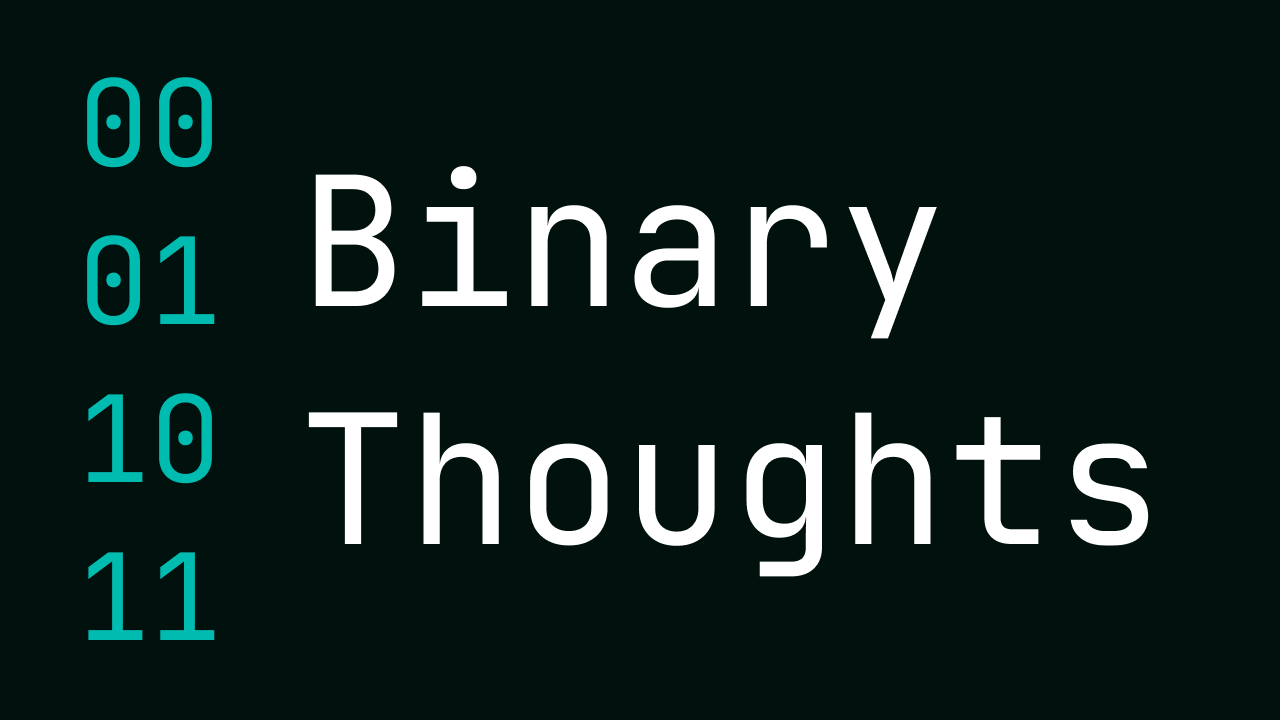When Machines Design Algorithms: Understanding Computational Language Processing
How researchers taught machines to discover algorithms by treating computation as a learnable language.
Algorithm discovery has historically been one of computer science's most creative endeavors. From Dijkstra's shortest path algorithm to the Fast Fourier Transform, breakthrough algorithms emerge from human insight, mathematical intuition, and often, flashes of inspiration. While we've automated countless aspects of computing, the design of new algorithms has remained fundamentally human.
Recent work from Caltech and SRI International introduces Computational Language Processing (CLP), a framework that teaches machines to discover algorithms automatically. The paper, published on arXiv, presents a deceptively simple but powerful insight: treat algorithms like sentences in a computational language that machines can learn to speak fluently.
The Core Idea: Algorithms as Computational Sentences
Imagine breaking down any algorithm into its most basic steps, akin to decomposing a sentence into individual words. CLP does exactly this for computational procedures. Every algorithm, no matter how complex, can be represented as a sequence of elementary operations called "primitives."
Take a simple optimization algorithm. It might involve computing gradients, finding optimal assignments, and interpolating between solutions. In CLP's representation, these become computational "words" that can be combined following grammatical rules to form algorithmic "sentences."
This linguistic metaphor isn't just conceptual; it's the foundation of how CLP works. By representing algorithms as token sequences, the framework transforms algorithm discovery from an open-ended creative challenge into a systematic search through a structured space of possibilities.
Making It Concrete: The Quadratic Assignment Problem
To understand how this works in practice, consider the Quadratic Assignment Problem (QAP), which is a notoriously difficult optimization challenge that appears in everything from facility layout to circuit design. The problem asks: given a set of facilities and locations, how do you assign facilities to locations to minimize total cost?
Mathematically, you're trying to minimize a complex expression involving distance and flow matrices. The catch? With n facilities, there are n! possible assignments for just 20 facilities (that's over 2 quintillion possibilities).
CLP approaches this by defining a vocabulary of computational primitives:
- Gradient computation: Calculate how the objective function changes
- Linear assignment: Find the optimal assignment for a simplified version
- Interpolation: Blend two solutions together
- Local search: Explore nearby solutions
The famous Frank-Wolfe algorithm, a staple of optimization theory, emerges naturally from this vocabulary. In CLP's language, it becomes: "repeatedly interpolate between your current solution and the optimal assignment of the gradient." This decomposition reveals the algorithm's essential logic while enabling systematic exploration of variants.
The Discovery Engine: Guided Search Through Algorithm Space
Here's where CLP gets sophisticated. The space of possible algorithm combinations is exponentially large. How do you explore it intelligently?
CLP adapts Monte Carlo Tree Search (MCTS), the same technique that powered AlphaGo's victories, for algorithm discovery. But algorithmic domains present unique challenges that required several innovations:
Handling Randomness
Many algorithmic steps involve randomness, and unlike chess, where each move leads to a deterministic position, algorithmic primitives often produce different outcomes each time they're applied.
CLP solves this by maintaining multiple solution candidates at each step and computing weighted averages of their performance. This ensemble approach provides robust estimates of how well an algorithmic strategy works on average, while capturing information about the variability of outcomes.
Managing Computational Costs
Not all primitives are created equal computationally. Computing a gradient might take microseconds, while running a complete local search could take minutes. CLP incorporates these costs directly into its search process, encouraging discovery of efficient algorithms that respect realistic computational constraints.
The framework allocates a total "computational budget" and tracks how much each primitive consumes. This cost-awareness ensures that discovered algorithms are practical, not just theoretically optimal.
Learning from Experience
The search process is guided by neural networks. Specifically, transformer architectures that excel at understanding sequences. These networks learn to predict which primitive combinations are likely to be successful based on the current state of the algorithm and the problem being solved.
As the system explores more algorithmic combinations, it gets better at recognizing patterns that lead to effective algorithms. The networks learn both which primitives to apply next (the "policy") and how good the current algorithmic path looks (the "value").
Building Algorithmic Vocabulary: Byte-Pair Encoding
One of CLP's cleverest innovations solves a fundamental trade-off. Low-level primitives offer maximum flexibility but create impossibly large search spaces. High-level operations reduce complexity but might miss novel combinations.
CLP's solution? Algorithmic Byte-Pair Encoding (A-BPE), borrowed from natural language processing. The system automatically identifies primitive combinations that appear frequently and merges them into higher-level "words" in its computational vocabulary.
Here's how it works in practice: The system notices that "find the best 2-city swap" appears often, so it creates a new primitive called 2FLIP. Later, it observes that applying 2FLIP repeatedly is common, so it creates 2OPT , rediscovering a classical optimization technique. Eventually, it builds up to complete algorithms like Frank-Wolfe, represented as complex but meaningful "sentences" in its computational language.
This process mirrors how human algorithmic thinking works. We start with basic operations, recognize useful patterns, and gradually build up libraries of sophisticated techniques. The authors demonstrate this beautifully in Figure 4 of their paper, showing how dominant strategies emerge as problem difficulty increases.
Instance-Specific Intelligence
Traditional algorithm design follows a one-size-fits-all philosophy. We develop an algorithm for a problem class and apply it uniformly across all instances. But what if different problem instances require different algorithmic approaches?
CLP enables instance-adaptive algorithms; specialized procedures tailored to individual problems rather than entire problem classes. The system learns to recognize problem characteristics that suggest certain algorithmic strategies will be more effective.
This capability directly challenges the "No Free Lunch" theorem, which states that no algorithm can be universally superior across all possible problems. By specializing algorithms to specific instances, CLP sidesteps these theoretical limitations through intelligent adaptation.
Remarkable Results Across Domains
The experimental results demonstrate CLP's potential across multiple areas:
Optimization Breakthroughs
On the challenging QAP, CLP achieves perfect solutions (100% success rate) on standard benchmarks up to size 80. On harder problem variants, it maintains optimality gaps under 1%. Most impressively, it outperforms the commercial Gurobi solver - one of the world's best optimization packages - in 389 out of 390 test cases.
Quantum Algorithm Innovation
Applied to Grover's quantum search algorithm, CLP discovered a circuit implementation that requires nearly half the depth of the standard construction. This isn't just an incremental improvement. In quantum computing, circuit depth directly affects error rates, so halving the depth provides exponential improvements in algorithm reliability.
The discovery involved a subtle but crucial insight: initializing quantum bits differently eliminates the need for certain operations while preserving the algorithm's mathematical properties. The technical details in Section 1.3 of the paper reveal how this seemingly simple change provides exponential improvements in quantum error resistance, a result that quantum computing researchers will find particularly compelling.
Enhanced Quantum Optimization
For the Quantum Approximate Optimization Algorithm (QAOA), CLP achieved 35% performance improvements over state-of-the-art adaptive methods. Rather than selecting quantum operations one at a time, CLP considers entire sequences, enabling more strategic optimization.
Critical Assessment: Promise and Limitations
CLP represents genuine innovation, but important limitations constrain its current scope:
Primitive Design Dependency: The framework's success depends heavily on choosing good computational primitives. Poor choices can bias discovery toward suboptimal approaches or make certain solutions unreachable. The paper provides examples for specific domains but limited guidance for new applications.
Scalability Questions: Current experiments work on moderate-scale problems, but scaling to truly large instances remains challenging. The computational overhead of the discovery process itself may limit practical applicability.
Domain Requirements: CLP requires efficient evaluation of candidate algorithms, limiting its use to problems where algorithmic performance can be assessed quickly and reliably.
Human Expertise: Despite automation, the framework still requires substantial human input to define primitives, specify grammars, and interpret results.
Broader Implications for Computer Science
CLP's significance extends beyond its immediate results to what it suggests about the future of computational discovery:
Research Acceleration: If algorithms can be discovered automatically, research cycles could compress dramatically. Rather than spending months developing optimization procedures, researchers could specify problems and constraints, then let CLP explore solution approaches.
Problem-Specific Optimization: Instance-adaptive algorithms could transform computational practice. Instead of selecting from fixed algorithm libraries, systems could generate specialized procedures optimized for specific problem characteristics.
Automated Discovery: The principles behind CLP could extend to other domains amenable to compositional representation: systems engineering, experimental design, even mathematical theorem proving.
The Path Forward
CLP establishes algorithm discovery as a learnable process, opening new research directions:
- How can we systematically design primitive sets that balance expressiveness with tractability?
- What other domains beyond optimization and quantum computing could benefit from CLP-style exploration?
- How might human-AI collaboration evolve as discovery frameworks become more sophisticated?
The work challenges fundamental assumptions about the creative nature of algorithmic design. While human insight remains crucial for defining problems and interpreting solutions, CLP demonstrates that systematic exploration of computational possibility spaces can yield genuinely innovative results.
What questions does this raise for your own research? The authors' approach suggests that many domains we consider inherently creative might be more systematic than we realize. Their framework provides a concrete methodology for testing this hypothesis across different computational domains.
As we enter an era where AI increasingly augments human creativity, CLP offers a glimpse of what automated discovery might accomplish. The algorithms that power tomorrow's breakthroughs may emerge not just from human inspiration, but from machines fluent in the language of computation, systematically exploring the vast space of algorithmic possibilities that human minds alone cannot fully traverse.

